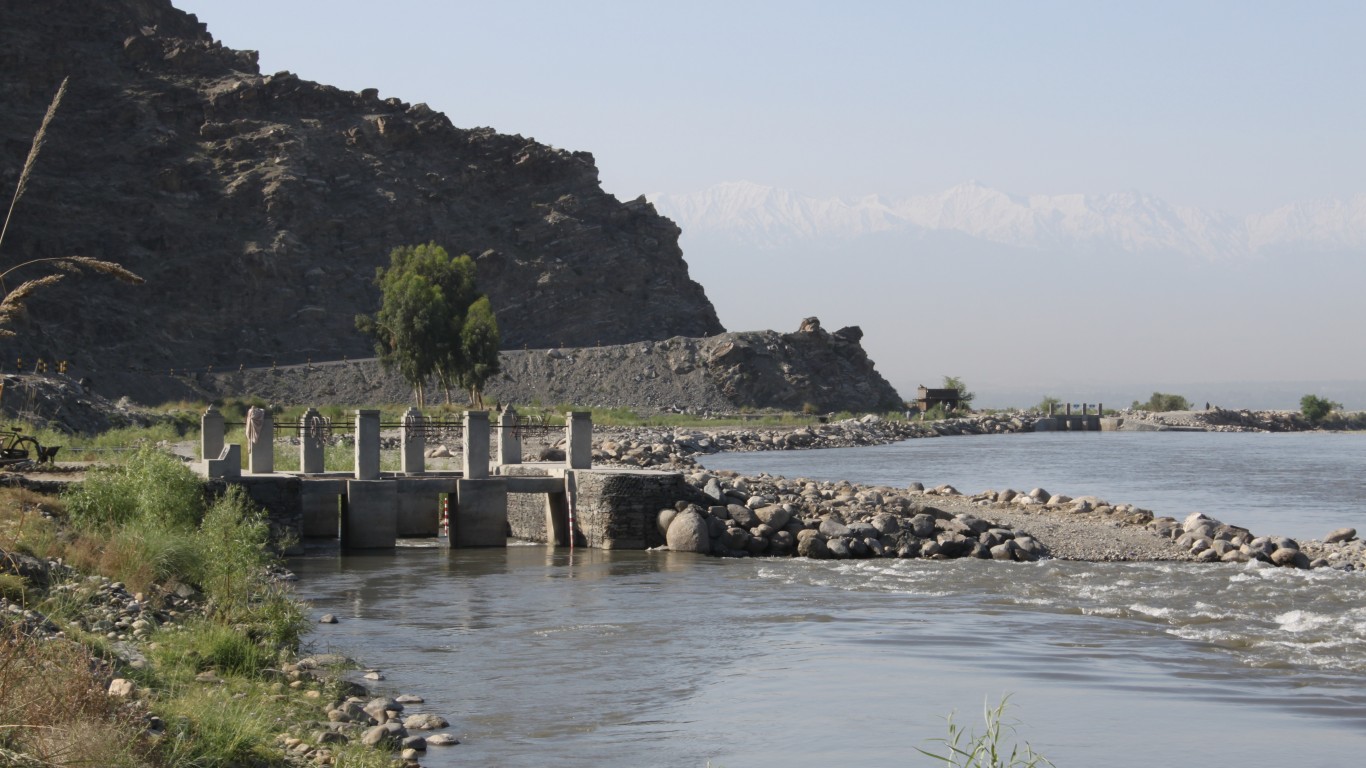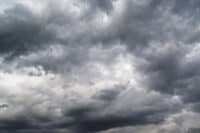
Climate scientists have warned that immediate and substantial action is necessary to cut greenhouse gas emissions in half by 2030 in order to limit global warming to 1.5 degrees Celsius (2.7 Fahrenheit) above pre-industrial levels. This goal was hammered out at the 2015 U.N. Climate Change Conference in Paris.
“Without increased and urgent mitigation ambition in the coming years, leading to a sharp decline in greenhouse gas emissions by 2030, global warming will surpass 1.5 C in the following decades, leading to irreversible loss of the most fragile ecosystems, and crisis after crisis for the most vulnerable people and societies,” the IPCC said in a special report in 2019.
Indeed, the punishing effects of global warming will not be dished out equally. To identify the counties most vulnerable to climate change, 24/7 Wall St. reviewed the Notre Dame Global Adaptation Initiative that measures the vulnerability to climate change and readiness of 182 different countries. Countries are ranked by their overall index score, which itself consists of a vulnerability index and a readiness index.
The vulnerability index “measures a country’s exposure, sensitivity and capacity to adapt to the negative effects of climate change,” considering indicators in six life-supporting sectors: food, water, health, ecosystem service, human habitat, and infrastructure. The readiness index “measures a country’s ability to leverage investments and convert them to adaptation actions” and considers different indicators in three components: economic readiness, governance readiness, and social readiness.
We also added GDP per capita and total population from the World Bank World Development Indicators for 2020. Ties were broken by GDP per capita.
The countries most vulnerable to climate change, including Bangladesh, Ethiopia, and Myanmar, are the ones least responsible for global warming. Meanwhile countries like Germany, Japan, and the United States that have economically prospered partly by releasing greenhouse gasses are far better prepared and developed to mitigate the effects of global warming.
For example, the United States recently committed to spending $369 billion on a climate plan that aims to reduce carbon emissions through a series of incentives that would promote clean energy, improve energy efficiency in housing, and provide tax credits for the purchase of electric cars and energy efficient appliances. (Earth’s CO2 level rose every year since climate change became a national issue.)
But the 30 countries most vulnerable to global warming lack the economic resources to dish out tax breaks for electric cars and green home appliances. These impoverished countries are home to more than a billion people, many of them living off subsistence-level, rain-fed agriculture in states wreaked with political instability and poor public infrastructure.
Twenty-three of these countries are African nations dispersed across the continent, including in arid North Africa and in the world’s second-largest rainforest of Central African. The tiny Caribbean country of Haiti is the most vulnerable in the Western Hemisphere. (These are the worst cities to live as climate change gets worse.)
Rising temperatures and rising sea levels, increased variability in precipitation, and increased risk of droughts and floods are the biggest threats from climate change. They will exacerbate existing problems, such as soil erosion caused by deforestation, salt water intrusion into freshwater aquifers, and food insecurity.
Paradoxically, global warming is causing both floods and droughts as higher temperatures suck up more water from the surface into the atmosphere, causing changes to global weather patterns that billions of people rely on for food production.
Here is the country most vulnerable to global warming.
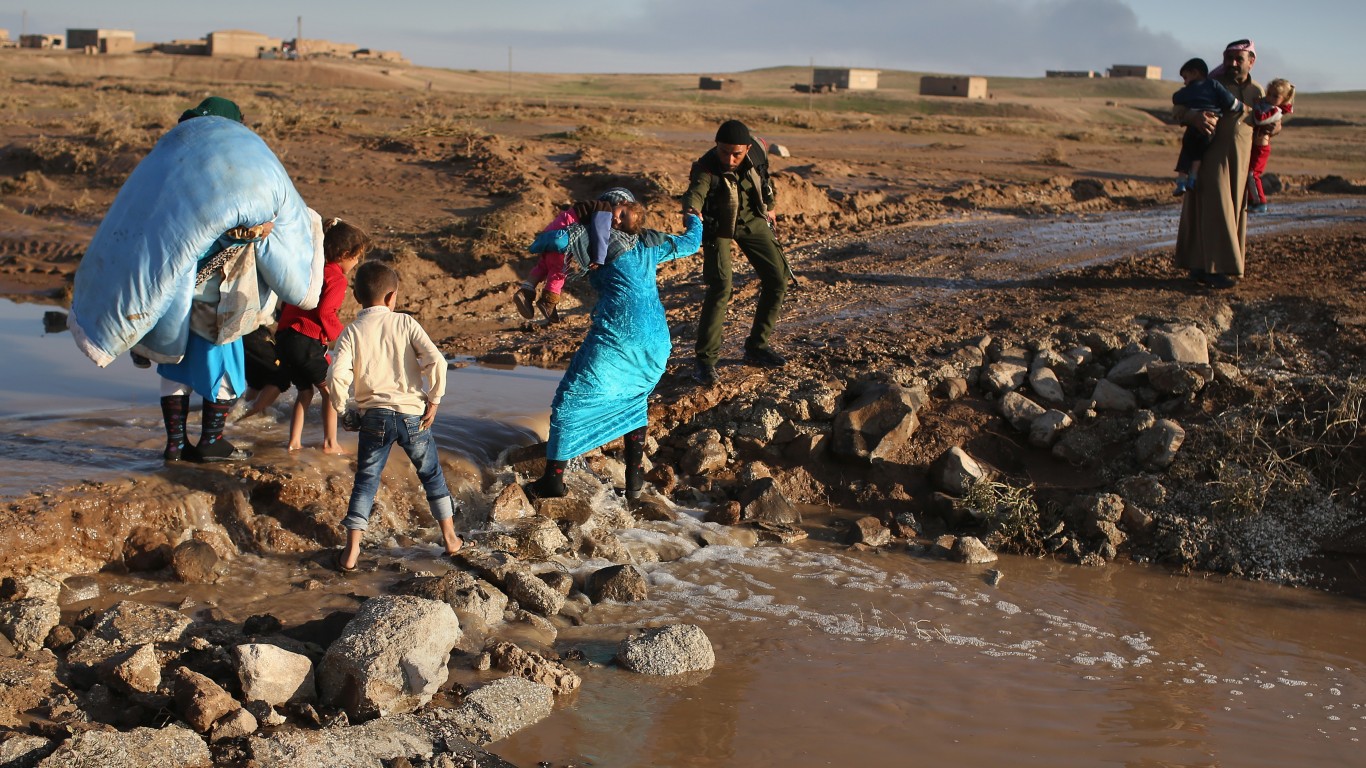
30. Syrian Arab Republic
> Overall index score: 38.1
> Vulnerability score: 0.47
> Worst vulnerability sector: Infrastructure
> Readiness score: 0.23
> Worst readiness dimension: Governance
> GDP per capita: N/A
> Population: 17,500,657 – #66 highest out of 182 countries
Water shortages are common in Syria, where nearly 90% of its freshwater is used for irrigation. The country grapples with an annual water deficit of about 3 billion cubic meters, or 20% of the country’s water needs. Models suggest that the hottest day of the year in Syria could be between 4 and 10 degrees Celsius higher by the end of the century. A civil war that has raged since 2011 has hobbled Syria’s ability to mitigate the impacts of climate change.
[in-text-ad]

29. Angola
> Overall index score: 37.9
> Vulnerability score: 0.51
> Worst vulnerability sector: Infrastructure
> Readiness score: 0.26
> Worst readiness dimension: Social readiness
> GDP per capita: $6,142 – #119 highest out of 182 countries
> Population: 32,866,268 – #44 highest out of 182 countries
This Western Africa country’s economy is heavily dependent on its oil industry, and about 85% of Angolans work in the agricultural sector, mostly as subsistence farmers. Floods, erosion, droughts, and epidemics are expected to become worse as the planet warms and sea levels rise. About half of the country’s population resides on the coast, making many Angolans susceptible to the impact of rising sea levels.
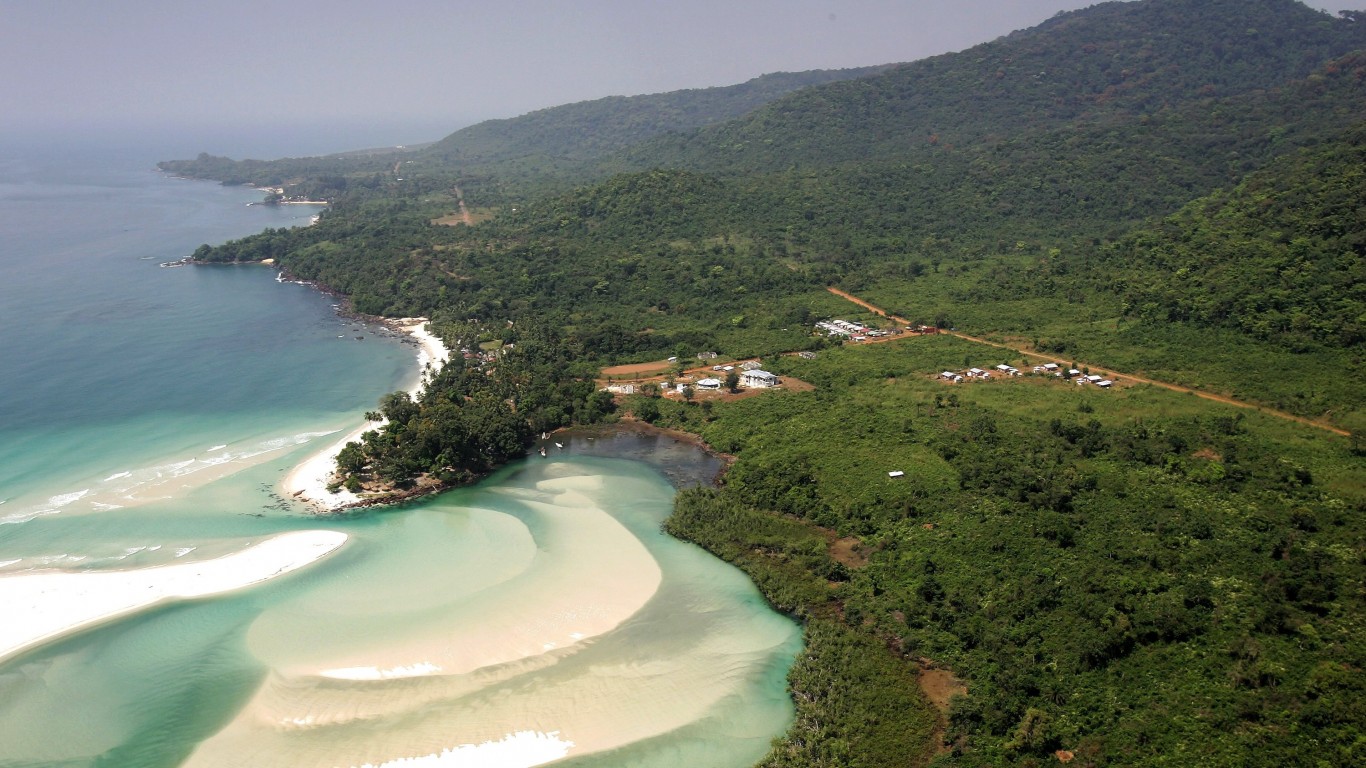
28. Sierra Leone
> Overall index score: 37.7
> Vulnerability score: 0.56
> Worst vulnerability sector: Infrastructure
> Readiness score: 0.32
> Worst readiness dimension: Economic
> GDP per capita: $1,637 – #164 highest out of 182 countries
> Population: 7,976,985 – #100 highest out of 182 countries
This mostly rural West African country, one of the poorest in the world, is bestowed with a substantial quantity of natural resources, including mineral deposits, and fertile agricultural land. But the livelihoods of Sierra Leoneans, who work mostly in agriculture, is threatened by changes in precipitation, increased temperatures, and higher risk of floods and droughts.
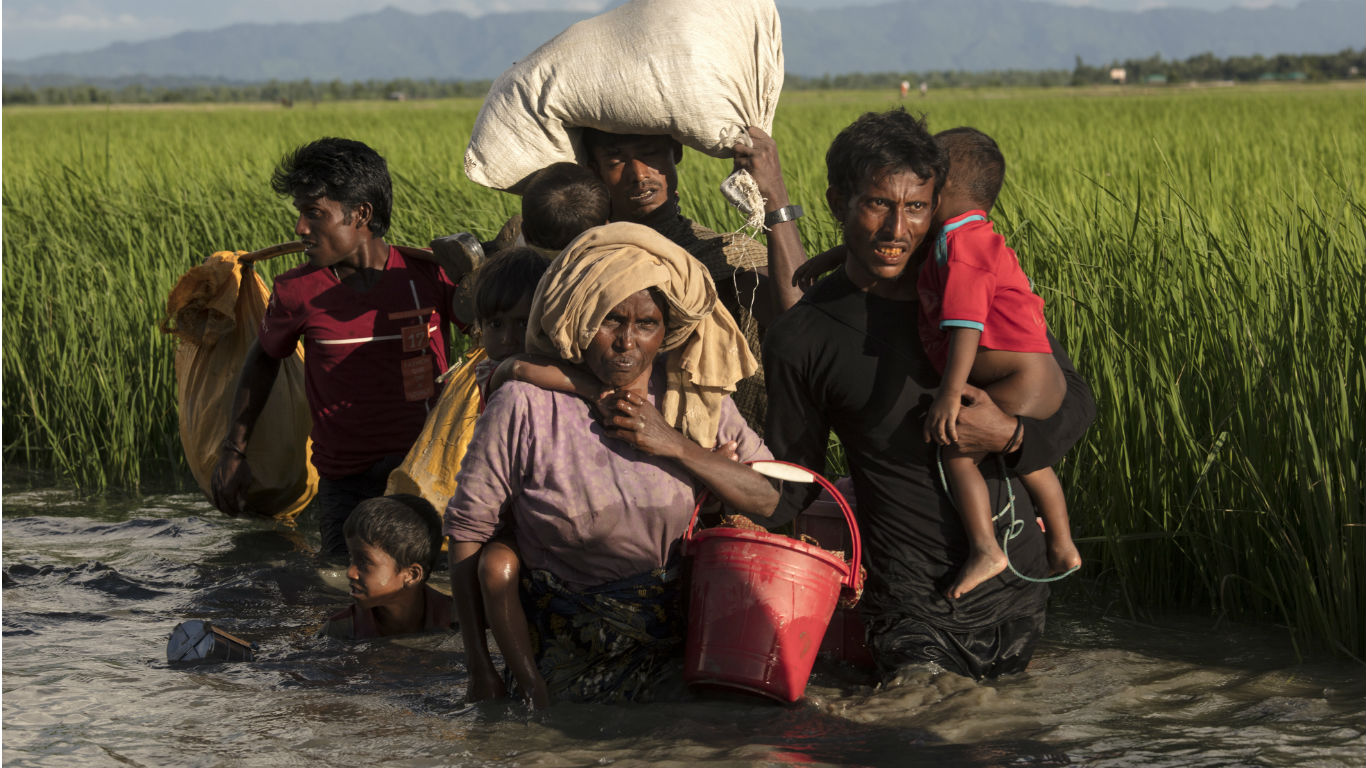
27. Myanmar
> Overall index score: 37.6 (tie)
> Vulnerability score: 0.53
> Worst vulnerability sector: Water
> Readiness score: 0.28
> Worst readiness dimension: Social readiness
> GDP per capita: $4,857 – #131 highest out of 182 countries
> Population: 54,409,794 – #26 highest out of 182 countries
The largest country in Southeast Asia is routinely threatened by its high exposure to flooding and tropical cyclones, as well as droughts in its drier interior. Rapid development in urban areas is not offering sufficient protection to natural hazards. A coup last year put Myanmar back under military rule, with little indication the regime is making climate change mitigation a priority despite having a high share of its (largely impoverished) population particularly susceptible to climate change hazards.
[in-text-ad-2]

26. Mozambique
> Overall index score: 37.6 (tie)
> Vulnerability score: 0.52
> Worst vulnerability sector: Water
> Readiness score: 0.27
> Worst readiness dimension: Social readiness
> GDP per capita: $1,230 – #169 highest out of 182 countries
> Population: 31,255,435 – #46 highest out of 182 countries
Mozambique suffers from too much intense rainfall in some places, causing flooding on coastlines and river basins, and not enough water in other places, where impoverished farmers depend heavily on rain-fed agriculture. Droughts occur about every three to four years, and water management is one of the country’s biggest challenges as sea levels and temperatures rise.

25. Nigeria
> Overall index score: 37.5 (tie)
> Vulnerability score: 0.50
> Worst vulnerability sector: Infrastructure
> Readiness score: 0.25
> Worst readiness dimension: Social readiness
> GDP per capita: $4,917 – #130 highest out of 182 countries
> Population: 206,139,587 – #7 highest out of 182 countries
The most populous country and largest economy in Africa is the top oil exporter in the continent. It also has the largest natural gas reserves. Though this large lower-middle-income country has an abundance of resources, about 40% of the population lives below the country’s poverty line. Water pollution, air pollution, oil spills, deforestation, erosion, and flooding due to inadequate infrastructure are common threats, many of which will worsen due to global warming and rising sea levels.
[in-text-ad]
24. Comoros
> Overall index score: 37.5 (tie)
> Vulnerability score: 0.53
> Worst vulnerability sector: Infrastructure
> Readiness score: 0.28
> Worst readiness dimension: Social readiness
> GDP per capita: $2,984 – #147 highest out of 182 countries
> Population: 869,595 – #155 highest out of 182 countries
This archipelagic country off the coast of East Africa near Madagascar is densely populated with more than half of the population living in what is considered at-risk areas for extreme weather. Deforestation to make room for agricultural activities has stripped this delicate ecosystem of its ability to retain rainfall and feed water into aquifers and rivers. Dahari, a local environmental nonprofit, estimates that Comoros has lost 40 rivers in the past 50 years.
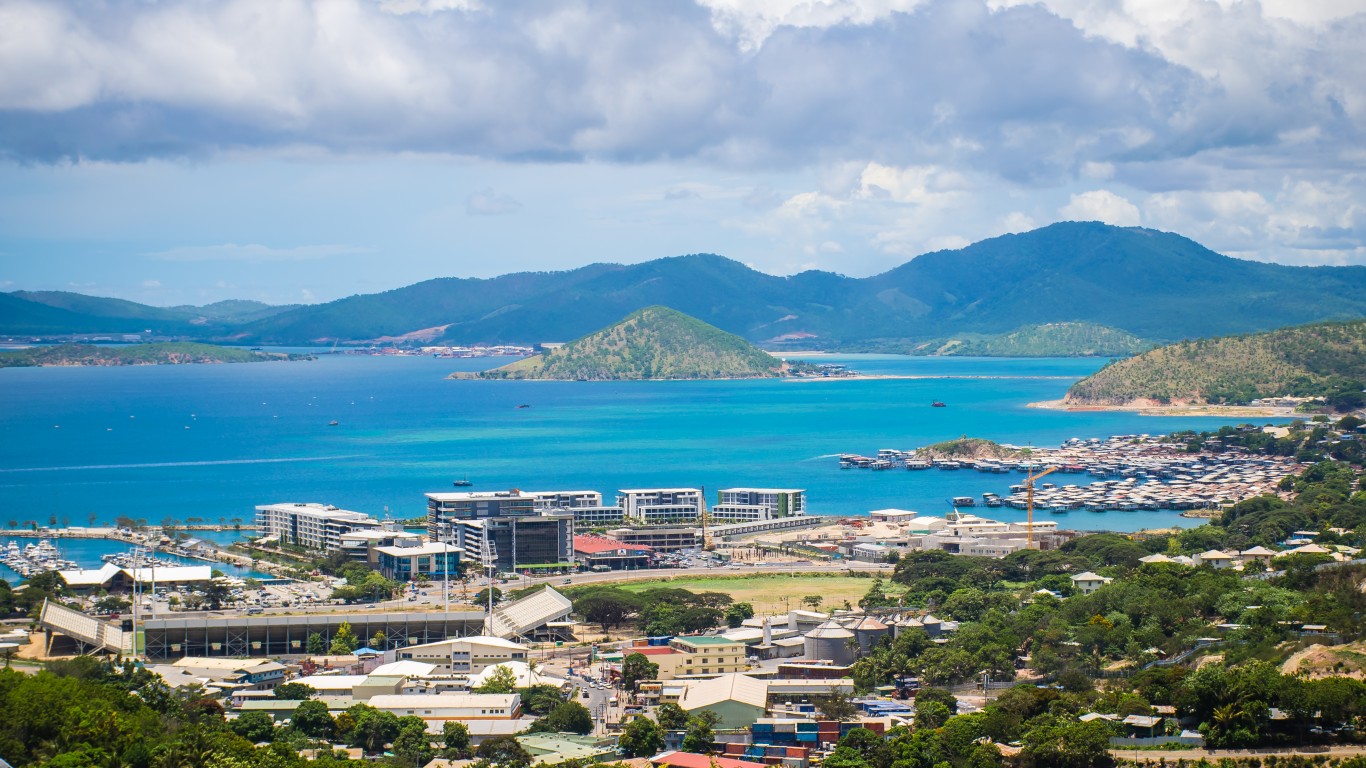
23. Papua New Guinea
> Overall index score: 37.4
> Vulnerability score: 0.54
> Worst vulnerability sector: Infrastructure
> Readiness score: 0.28
> Worst readiness dimension: Social readiness
> GDP per capita: $4,063 – #135 highest out of 182 countries
> Population: 8,947,027 – #96 highest out of 182 countries
Like other countries of the Pacific region, Papua New Guinea is particularly vulnerable to rising sea levels, extreme rainfall, and storm surges. The country has one of the world’s largest tropical rainforests, which provides most of the population with food and shelter. The country’s widely dispersed population of subsistence farmers have little capacity to protect themselves from natural disasters induced by climate change.
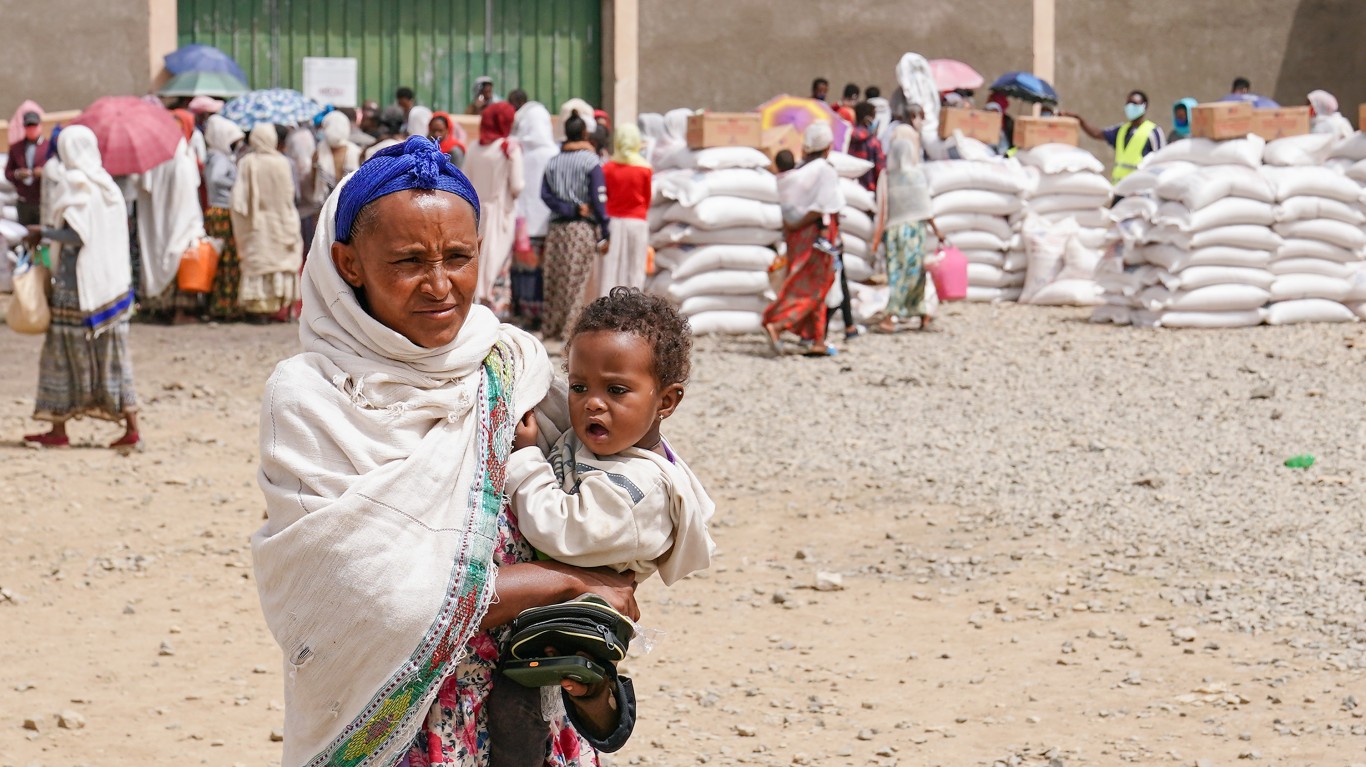
22. Ethiopia
> Overall index score: 37.2 (tie)
> Vulnerability score: 0.56
> Worst vulnerability sector: Infrastructure
> Readiness score: 0.31
> Worst readiness dimension: Social readiness
> GDP per capita: $2,297 – #154 highest out of 182 countries
> Population: 114,963,583 – #12 highest out of 182 countries
Ethiopia is a landlocked, largely arid and drought-prone country with tropical savanna in the west and southwest and temperate conditions in higher altitudes. Global warming will affect Africa’s second-most populous country through more hot days, changes to rainfall patterns, and flooding in the more humid parts of the country. These climate shocks will only add to the country’s struggles of localized internal conflicts, exacerbating humanitarian needs.
[in-text-ad-2]
21. Burkina Faso
> Overall index score: 37.2 (tie)
> Vulnerability score: 0.55
> Worst vulnerability sector: Water
> Readiness score: 0.29
> Worst readiness dimension: Social readiness
> GDP per capita: $2,156 – #158 highest out of 182 countries
> Population: 20,903,278 – #58 highest out of 182 countries
The landlocked low-income West African country has limited natural resources, and its people are heavily reliant on agricultural activities — about 80% of the population is working in the sector. With 40% of the country’s population living below the poverty line, Burkina Faso faces numerous development challenges, made worse by outbreaks of intercommunal conflict. The country is confronting more frequent flood-inducing rainfall in the east and decreases in precipitation and crippling droughts in the west.
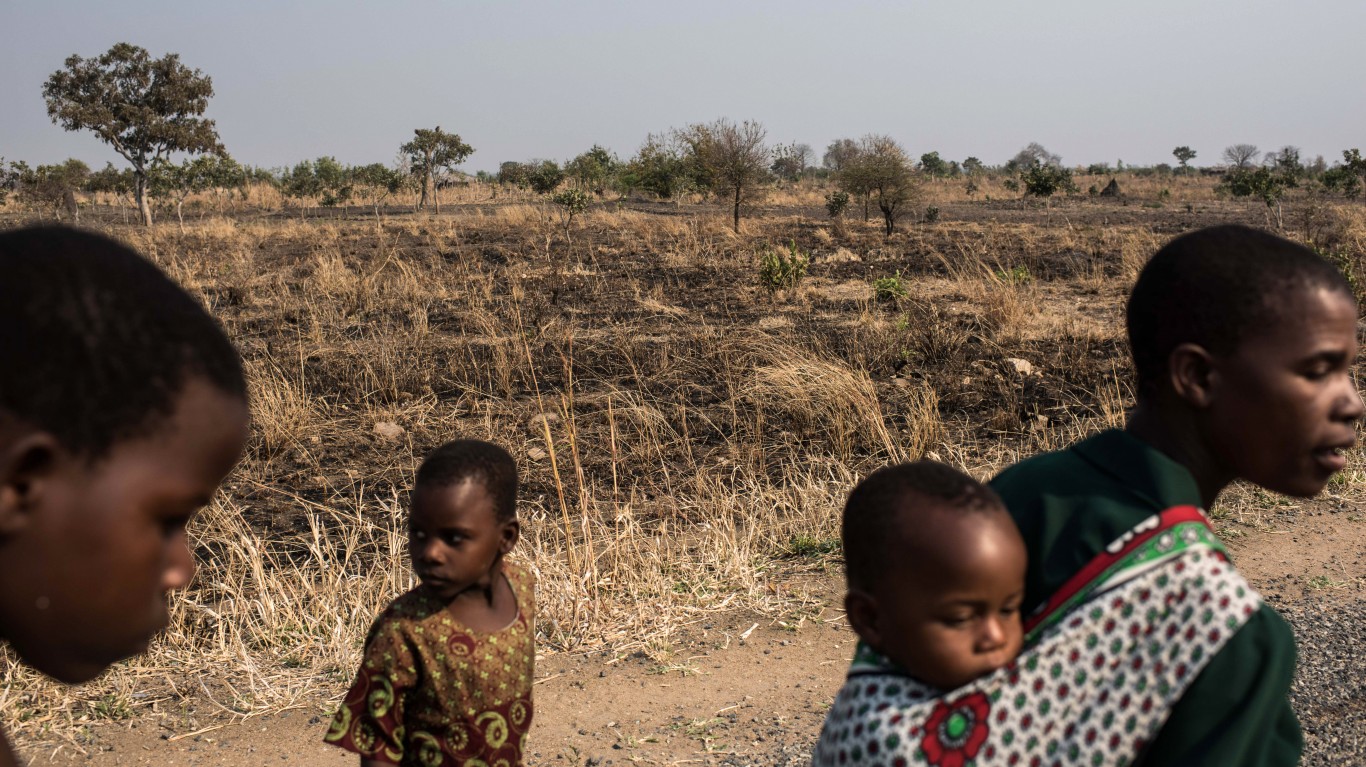
20. Malawi
> Overall index score: 37.0
> Vulnerability score: 0.55
> Worst vulnerability sector: Water
> Readiness score: 0.29
> Worst readiness dimension: Social readiness
> GDP per capita: $1,509 – #166 highest out of 182 countries
> Population: 19,129,955 – #61 highest out of 182 countries
Increased frequency of droughts and floods poses the greatest environmental threat to this landlocked country in the southeast of the African continent. For example, in 2015, maize production plunged by 30% due to floods in the south, followed by a countrywide drought that put nearly one in five Malawians at risk of food insecurity. Extreme rainfall events and droughts are highly likely to increase in the decades to come.
[in-text-ad]
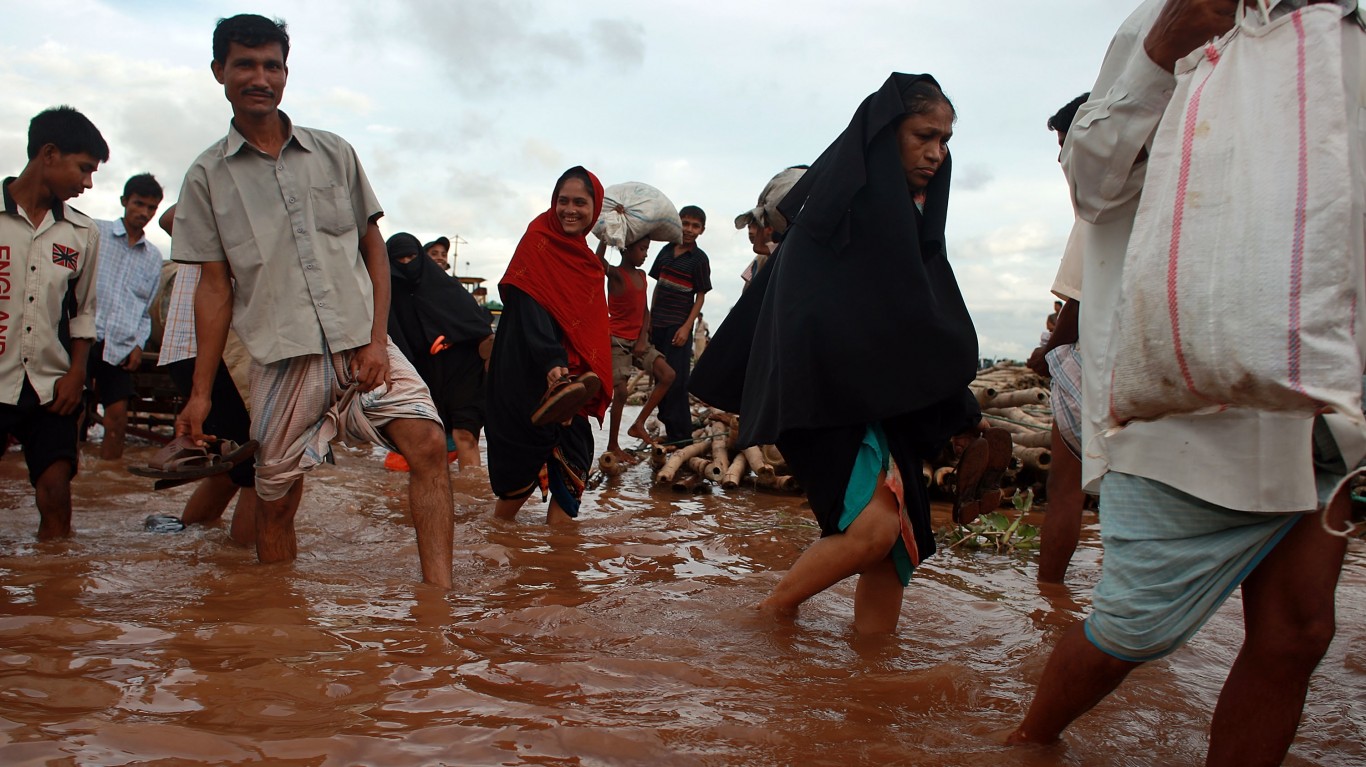
19. Bangladesh
> Overall index score: 36.9
> Vulnerability score: 0.54
> Worst vulnerability sector: Infrastructure
> Readiness score: 0.28
> Worst readiness dimension: Economic
> GDP per capita: $5,684 – #122 highest out of 182 countries
> Population: 164,689,383 – #8 highest out of 182 countries
One of the most densely populated countries in the world is situated in a low-lying coastal region with an extensive river delta. This makes Bangladesh highly susceptible to rising sea levels and extreme weather events, particularly from tropical cyclones. In 2017, Cyclone Mora displaced a half-million Bangladeshis. Rapid urbanization, high poverty rates, and poor infrastructure make the county particularly susceptible to the effects of climate change.

18. Burundi
> Overall index score: 35.5
> Vulnerability score: 0.56
> Worst vulnerability sector: Water
> Readiness score: 0.27
> Worst readiness dimension: Social readiness
> GDP per capita: $731 – #174 highest out of 182 countries
> Population: 11,890,781 – #77 highest out of 182 countries
This landlocked low-income tropical country is one of the most densely populated in sub-Saharan Africa, with about 80% of the population employed in agricultural activities, led by subsistence farming. Development efforts are being hampered by more frequent and intense rainfall and flooding, less predictable precipitation patterns, and rising temperatures. Deforestation and soil exhaustion also pose risks to the environment and economy.

17. Uganda
> Overall index score: 35.4
> Vulnerability score: 0.58
> Worst vulnerability sector: Water
> Readiness score: 0.29
> Worst readiness dimension: Social readiness
> GDP per capita: $2,175 – #156 highest out of 182 countries
> Population: 45,741,000 – #31 highest out of 182 countries
Like other countries in East Africa, the biggest threats to Uganda from climate change is the increased frequency of natural disasters like floods, droughts, and landslides. These hazards have reduced crop yields and increased loss of livestock among the country’s many subsistence farmers, threatening them with food insecurity. The situation is especially severe in the country’s northeastern Karamoja, one of the world’s poorest regions. Growing seasons have been disrupted by increased precipitation in months that were previously dry.
[in-text-ad-2]
16. Madagascar
> Overall index score: 35.3
> Vulnerability score: 0.56
> Worst vulnerability sector: Infrastructure
> Readiness score: 0.27
> Worst readiness dimension: Social readiness
> GDP per capita: $1,464 – #167 highest out of 182 countries
> Population: 27,691,019 – #51 highest out of 182 countries
Situated in the Indian Ocean off the African mainland coast, Madagascar averages about three tropical cyclones per year. As those storms become more frequent and more powerful, Madagascar will bear the brunt of these and other extreme weather events affecting East African coastlines. Rising temperatures and increased unpredictability of seasonal rainfall will exacerbate damage to agricultural activities in a country already grappling with high rates of food insecurity, deforestation, and soil erosion.
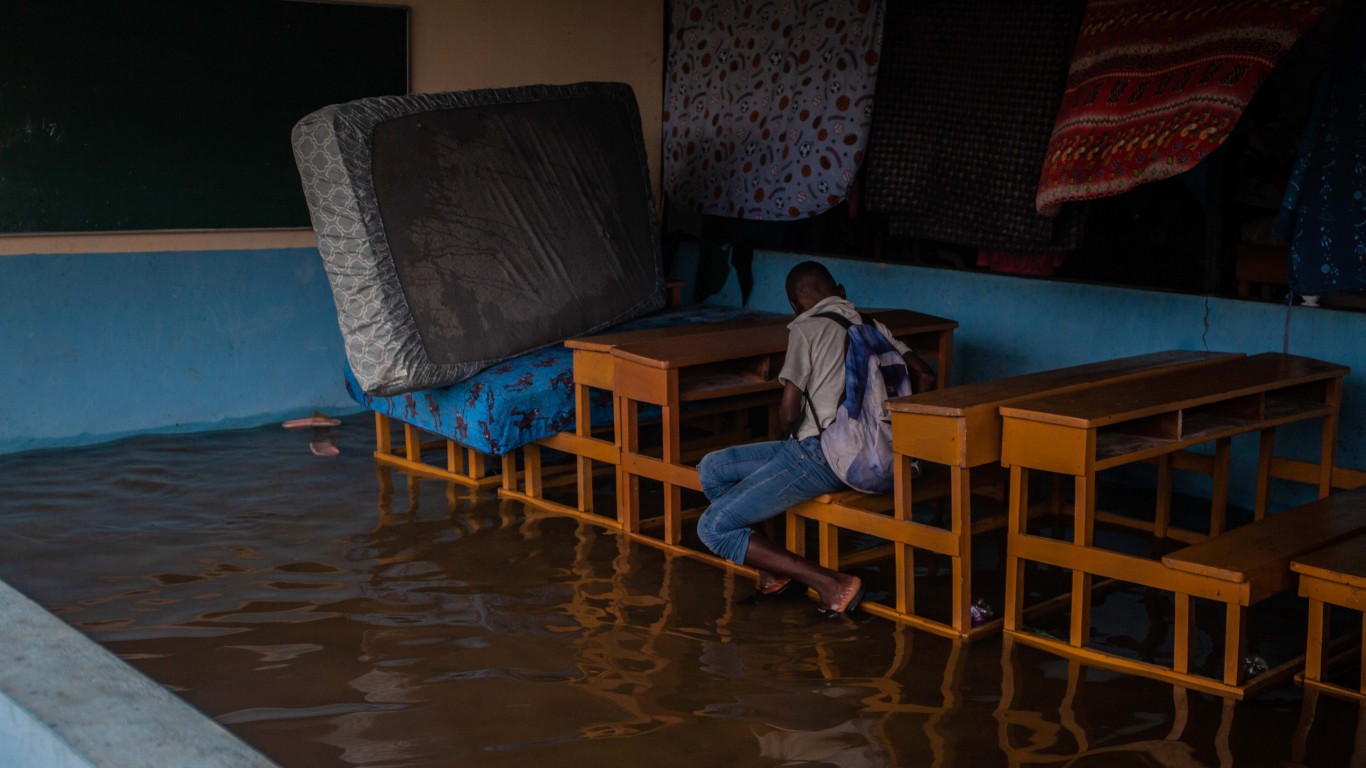
15. Haiti
> Overall index score: 35.0
> Vulnerability score: 0.53
> Worst vulnerability sector: Water
> Readiness score: 0.23
> Worst readiness dimension: Social readiness
> GDP per capita: $2,934 – #148 highest out of 182 countries
> Population: 11,402,533 – #81 highest out of 182 countries
Located in the center of the so-called “hurricane belt,” Haiti is the country in the Americas most vulnerable to climate change. As these tropical cyclones increase in frequency and force, Haitians will be susceptible to more flooding and landslides from stronger storm surges, exacerbated by massive deforestation that causes the land to soak up less rainfall. Precipitation is expected to decrease during the dry season, wreaking havoc on agricultural activities already harmed by soil erosion and salt-water intrusion into freshwater aquifers.
[in-text-ad]

14. Congo, Rep.
> Overall index score: 34.8
> Vulnerability score: 0.52
> Worst vulnerability sector: Infrastructure
> Readiness score: 0.22
> Worst readiness dimension: Economic
> GDP per capita: $3,498 – #142 highest out of 182 countries
> Population: 5,518,092 – #114 highest out of 182 countries
The Republic of Congo is one of three countries that make up the Congo Basin, the world’s second-largest tropical rainforest after the Amazon Basin of South America. Like its neighbors, the Democratic Republic of Congo and the Central Africa Republic, the ROC suffers from political instability and extreme poverty. All three countries will experience a rise in temperature of between 1.7 and 2.7 degrees Celsius by 2050, increased variability in precipitation, and higher risk of droughts and floods.

13. Mali
> Overall index score: 34.7
> Vulnerability score: 0.60
> Worst vulnerability sector: Water
> Readiness score: 0.29
> Worst readiness dimension: Economic
> GDP per capita: $2,226 – #155 highest out of 182 countries
> Population: 20,250,834 – #59 highest out of 182 countries
Located in the arid Sahel Region of West Africa, Mali is one of the poorest countries in the world with over 40% of the population living in extreme poverty. As with other arid countries, Mali is prone to periods of droughts and dry spells that are expected to increase in frequency and intensity as the planet warms. The hydro-meteorological risks will increase, including in the greener southern part of the country where most of the population resides.

12. Yemen, Rep.
> Overall index score: 34.5
> Vulnerability score: 0.56
> Worst vulnerability sector: Infrastructure
> Readiness score: 0.25
> Worst readiness dimension: Governance
> GDP per capita: N/A
> Population: 29,825,968 – #48 highest out of 182 countries
The poorest country in the Middle East is also suffering one of the world’s worst humanitarian crises amid a civil war and regional conflict that’s been raging since 2014. Yemenis face scarcity of food and water. Rising sea levels and extreme weather events marked by flash floods and droughts will lead to further hardships by reducing water quality and agricultural yields and increasing soil erosion transmission of associated diseases like cholera.
[in-text-ad-2]

11. Somalia
> Overall index score: 34.2
> Vulnerability score: 0.67
> Worst vulnerability sector: Water
> Readiness score: 0.36
> Worst readiness dimension: Governance
> GDP per capita: $1,181 – #171 highest out of 182 countries
> Population: 15,893,219 – #72 highest out of 182 countries
Somalia has 3,025 kilometers (1,879 miles) of coastline, the longest among countries of the African Continent, making it particularly susceptible to rising sea levels. A staggering 69% of the population live below the country’s poverty line. Ongoing internal conflict hampers Somalia’s ability to mitigate the effects of climate change, including more droughts. Less regular and more intense precipitation will cause more floods and soil erosion in the more humid parts of the country.
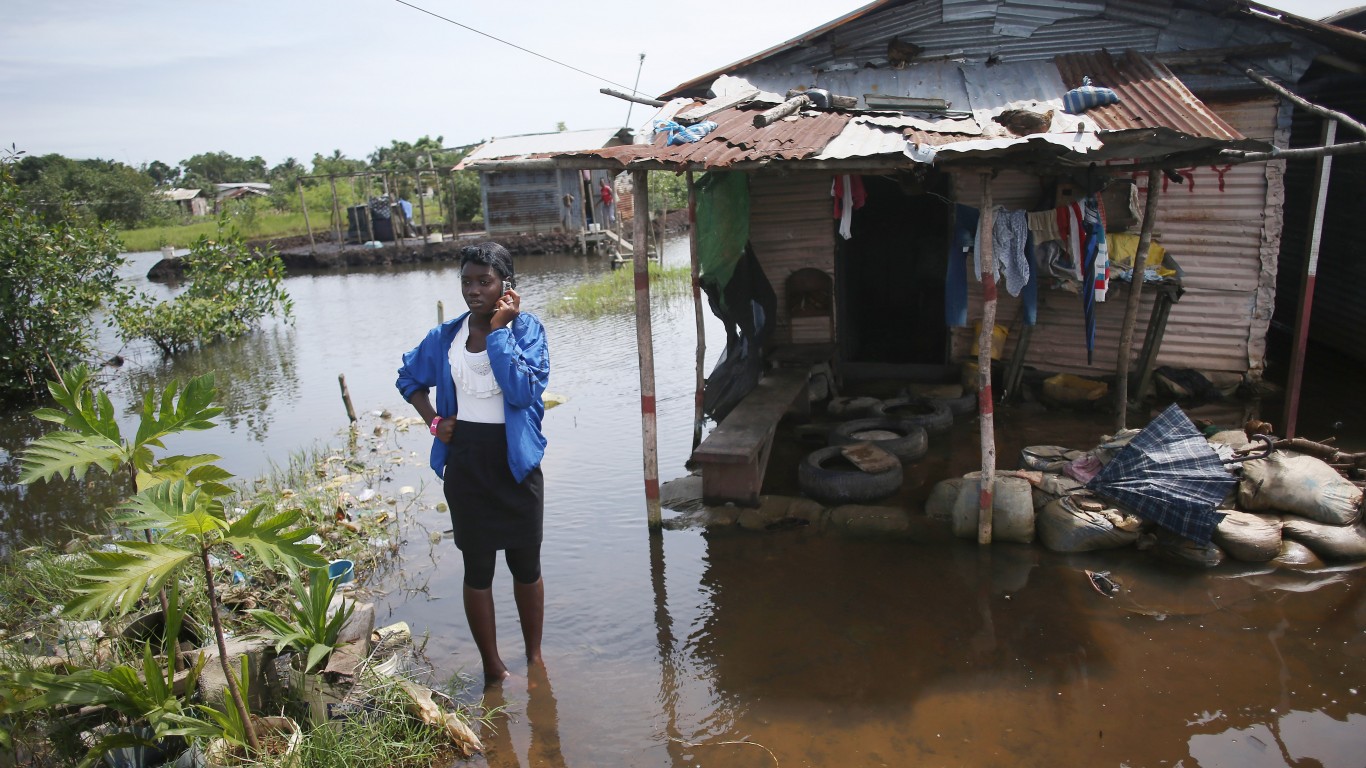
10. Liberia
> Overall index score: 33.8
> Vulnerability score: 0.60
> Worst vulnerability sector: Water
> Readiness score: 0.28
> Worst readiness dimension: Economic
> GDP per capita: $1,392 – #168 highest out of 182 countries
> Population: 5,057,677 – #120 highest out of 182 countries
Liberia’s economic development has improved since the end of its civil war in 2003, but the West African country is still fraught by extreme poverty and inadequate public infrastructure. Vital agricultural activities are hampered by soil degradation and extreme weather events, and those issues are expected to worsen as sea levels rise, impacting the country’s fertile coastal lowlands.
[in-text-ad]

9. Zimbabwe
> Overall index score: 33.1
> Vulnerability score: 0.55
> Worst vulnerability sector: Water
> Readiness score: 0.22
> Worst readiness dimension: Social readiness
> GDP per capita: $2,135 – #159 highest out of 182 countries
> Population: 14,862,927 – #73 highest out of 182 countries
This landlocked sub-Saharan African country has suffered from years of economic and political instability, and climate change will exacerbate these issues by adversely impacting food and water security. Like many other African countries, Zimbabwe depends highly on rain-fed agriculture and will be susceptible to a volatile combination of increased variability and intensity of precipitation and droughts.
8. Afghanistan
> Overall index score: 33.0
> Vulnerability score: 0.58
> Worst vulnerability sector: Water
> Readiness score: 0.24
> Worst readiness dimension: Governance
> GDP per capita: $1,971 – #162 highest out of 182 countries
> Population: 38,928,341 – #37 highest out of 182 countries
Four decades of extreme political and socioeconomic conditions have crippled Afghanistan’s ability to implement measures to adapt to global warming in this mostly arid and landlocked Central Asian country. Climate change will manifest in generally drier conditions, and changes in precipitation and snowmelt will increase seasonal flash flood risks. An increased competition for resources — namely water — could lead to more internal strife and displacement of impoverished communities.

7. Niger
> Overall index score: 32.9
> Vulnerability score: 0.68
> Worst vulnerability sector: Ecosystem services
> Readiness score: 0.33
> Worst readiness dimension: Social readiness
> GDP per capita: $1,221 – #170 highest out of 182 countries
> Population: 24,206,636 – #56 highest out of 182 countries
Rising temperatures and increased rainfall unpredictability will have profound impacts in Niger, a landlocked, politically unstable African country that lies mostly in the Saharan desert. With so little arable land, Niger experiences chronic food insecurity that will get worse, as agricultural yields and water quality decline as a result of climate change.
[in-text-ad-2]

6. Sudan
> Overall index score: 32.3
> Vulnerability score: 0.62
> Worst vulnerability sector: Infrastructure
> Readiness score: 0.26
> Worst readiness dimension: Governance
> GDP per capita: $3,927 – #137 highest out of 182 countries
> Population: 43,849,269 – #35 highest out of 182 countries
Climate change will pose profound challenges to Sudan’s ability to combat extreme poverty and food insecurity. This mostly arid East African country has been experiencing rapid southward-moving desertification that will increase with high frequencies of droughts and less dependable seasonal rainfall. Reduced pastureland and lower crop yields will further drive rural populations into urban centers, while storm surges will impact Sudan’s riverside and Red Sea coastal communities.

5. Congo, Dem. Rep.
> Overall index score: 31.1 (tie)
> Vulnerability score: 0.59
> Worst vulnerability sector: Infrastructure
> Readiness score: 0.21
> Worst readiness dimension: Social readiness
> GDP per capita: $1,082 – #172 highest out of 182 countries
> Population: 89,561,404 – #16 highest out of 182 countries
The Democratic Republic of Congo, the Republic of Congo, and the Central African Republic make up the three countries of the Congo Basin, the world’s second-largest rainforest. All three countries share similar issues in food insecurity and high poverty rates, and climate change will exacerbate these longstanding problems through increased variability of precipitation, more flash flooding during heavy rainfalls, and droughts that will all reduce crop yields.
[in-text-ad]

4. Eritrea
> Overall index score: 31.1 (tie)
> Vulnerability score: 0.59
> Worst vulnerability sector: Infrastructure
> Readiness score: 0.21
> Worst readiness dimension: Social readiness
> GDP per capita: N/A
> Population: N/A
This small coastal country in East Africa is highly dependent on rain-fed agriculture and thus food insecurity is one of the biggest threats of climate change to the population. Higher temperatures throughout the countries in the Horn of Africa will lower yields of crops sensitive to temperature extremes, such as maize. Expected changes in the frequency and intensity of droughts will also pose challenges for food production.
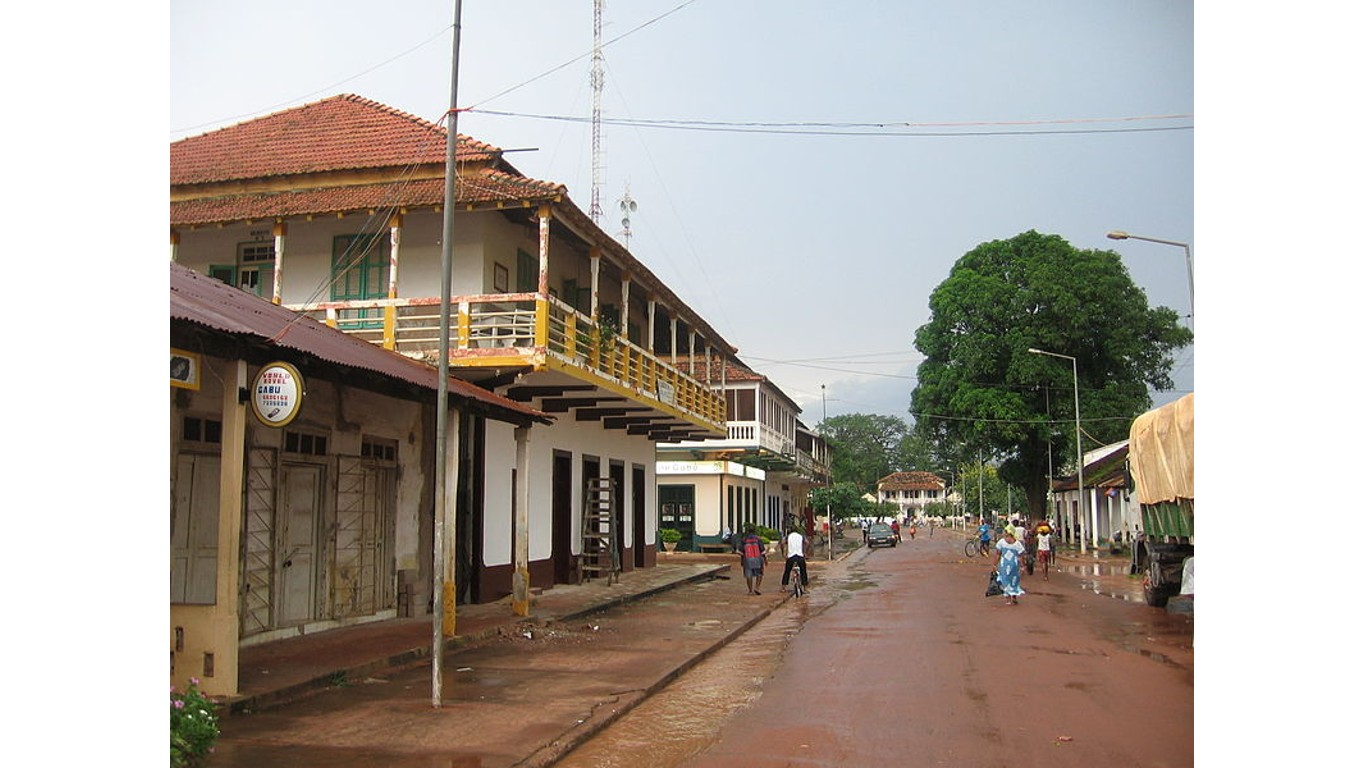
3. Guinea-Bissau
> Overall index score: 30.6
> Vulnerability score: 0.66
> Worst vulnerability sector: Water
> Readiness score: 0.27
> Worst readiness dimension: Economic
> GDP per capita: $1,847 – #163 highest out of 182 countries
> Population: 1,967,998 – #144 highest out of 182 countries
The tiny tropical West African coastal country of Guinea-Bissau is situated in a region of the world that’s one of the most vulnerable to global warming. Floods are a frequent natural hazard that’s expected to worsen as sea levels rise and rainfall becomes more extreme, causing coastal erosion and increased salinization of water used to irrigate rice crops. More water will increase the propagation of tropical diseases, especially malaria.

2. Central African Republic
> Overall index score: 27.1
> Vulnerability score: 0.59
> Worst vulnerability sector: Water
> Readiness score: 0.14
> Worst readiness dimension: Economic
> GDP per capita: $938 – #173 highest out of 182 countries
> Population: 4,829,764 – #122 highest out of 182 countries
The Central Africa Republic, Democratic Republic of Congo, and the Republic of Congo, make up the three countries of the Congo Basin, the world’s second-largest rainforest. The intensity of rainfall is predicted to increase in the region due to climate change, but insufficient water and sanitation infrastructure will cause more floods and water-born diseases.
[in-text-ad-2]
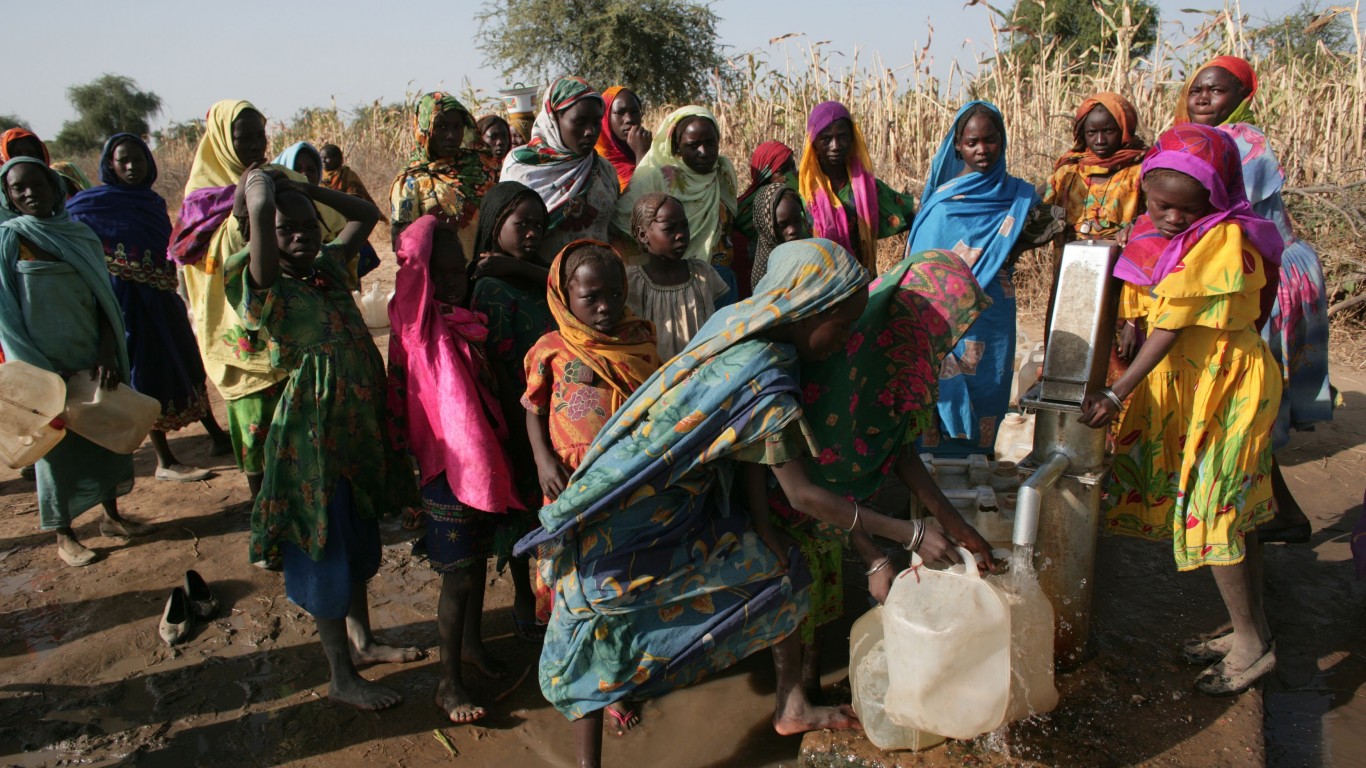
1. Chad
> Overall index score: 26.7
> Vulnerability score: 0.66
> Worst vulnerability sector: Water
> Readiness score: 0.19
> Worst readiness dimension: Economic
> GDP per capita: $1,509 – #165 highest out of 182 countries
> Population: 16,425,859 – #71 highest out of 182 countries
This landlocked mostly arid and impoverished country has been identified as the country most vulnerable to global warming, with highest temperatures rising by as much 6 degrees Celsius (43 degrees F) by the end of the century. Rainfall is forecast to decline in the arid northern parts of the country that need water the most. Variability in rainfall frequency and intensity in the south will pose serious challenges to the country’s mostly rain-fed agriculture.
Want to Retire Early? Start Here (Sponsor)
Want retirement to come a few years earlier than you’d planned? Or are you ready to retire now, but want an extra set of eyes on your finances?
Now you can speak with up to 3 financial experts in your area for FREE. By simply clicking here you can begin to match with financial professionals who can help you build your plan to retire early. And the best part? The first conversation with them is free.
Click here to match with up to 3 financial pros who would be excited to help you make financial decisions.
Have questions about retirement or personal finance? Email us at [email protected]!
By emailing your questions to 24/7 Wall St., you agree to have them published anonymously on a673b.bigscoots-temp.com.
By submitting your story, you understand and agree that we may use your story, or versions of it, in all media and platforms, including via third parties.
Thank you for reading! Have some feedback for us?
Contact the 24/7 Wall St. editorial team.
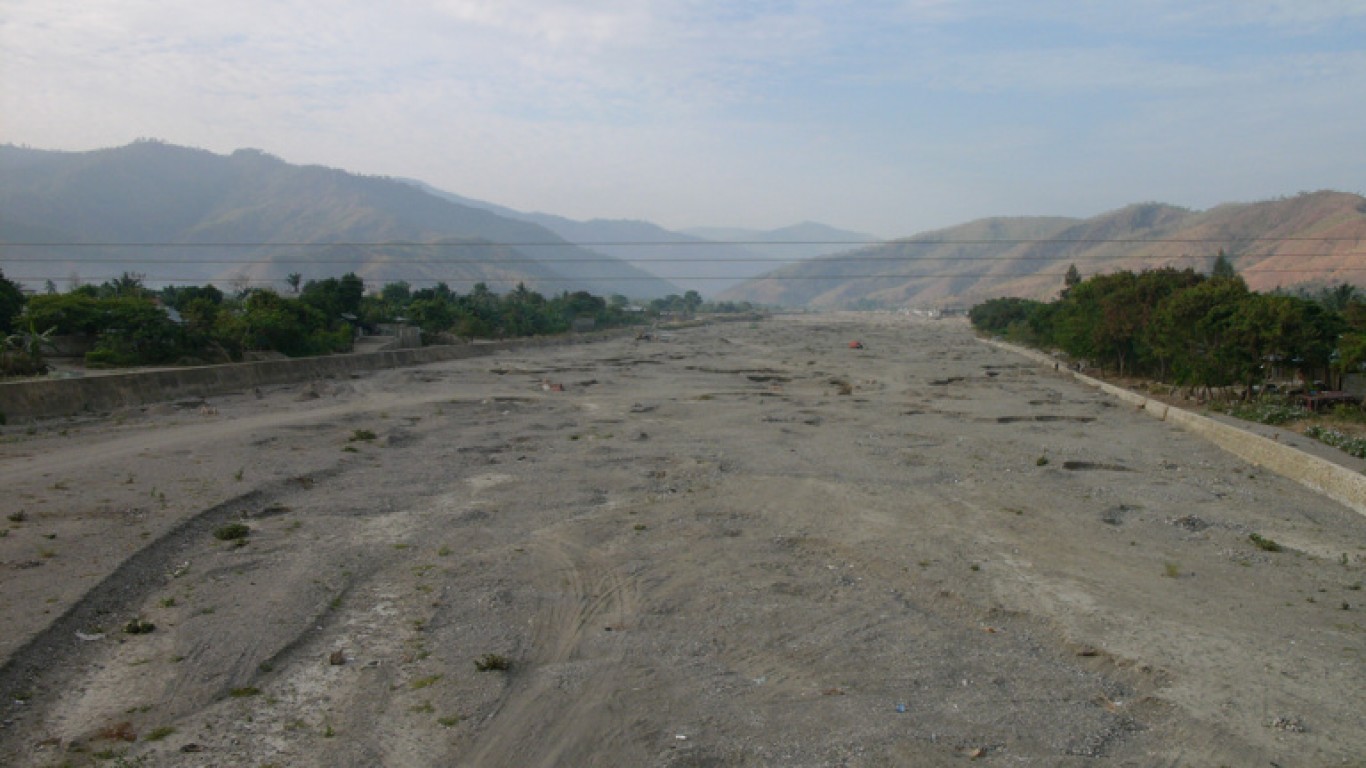
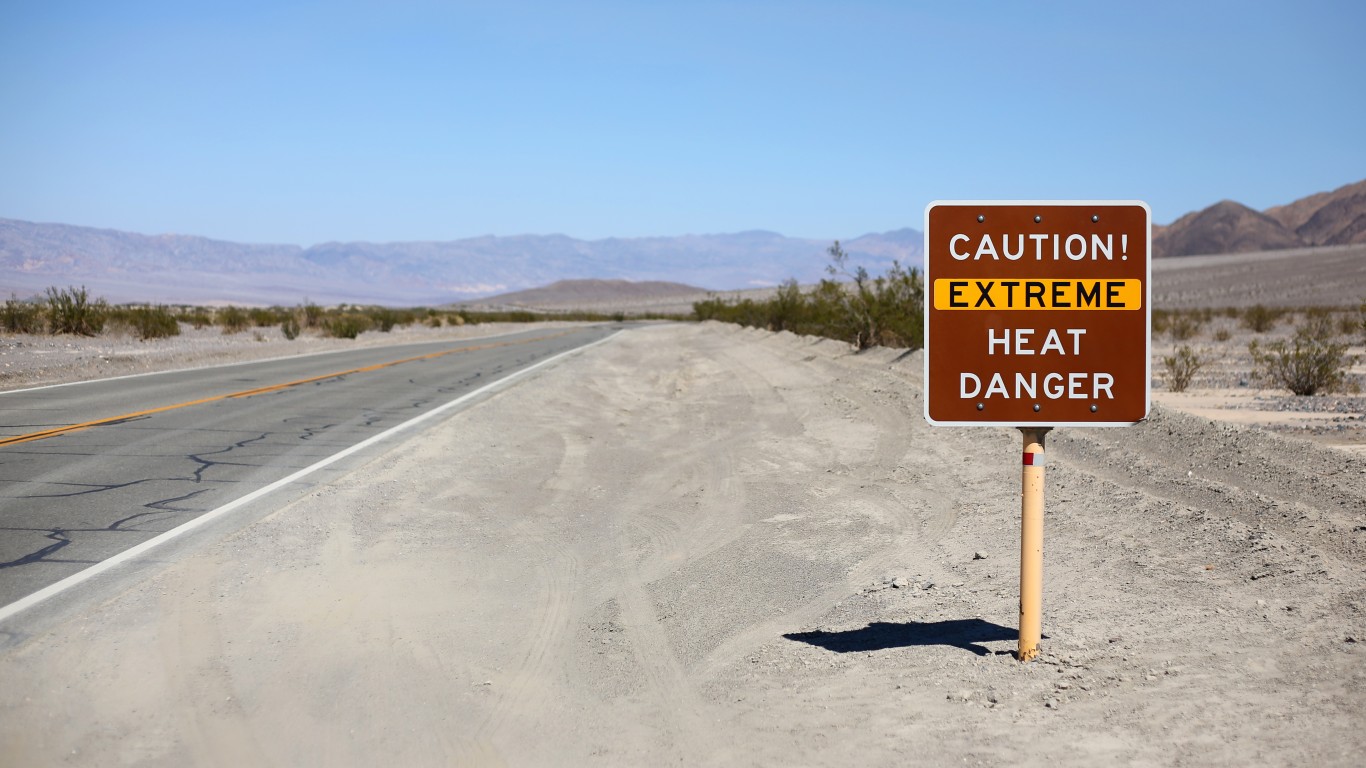 24/7 Wall St.
24/7 Wall St.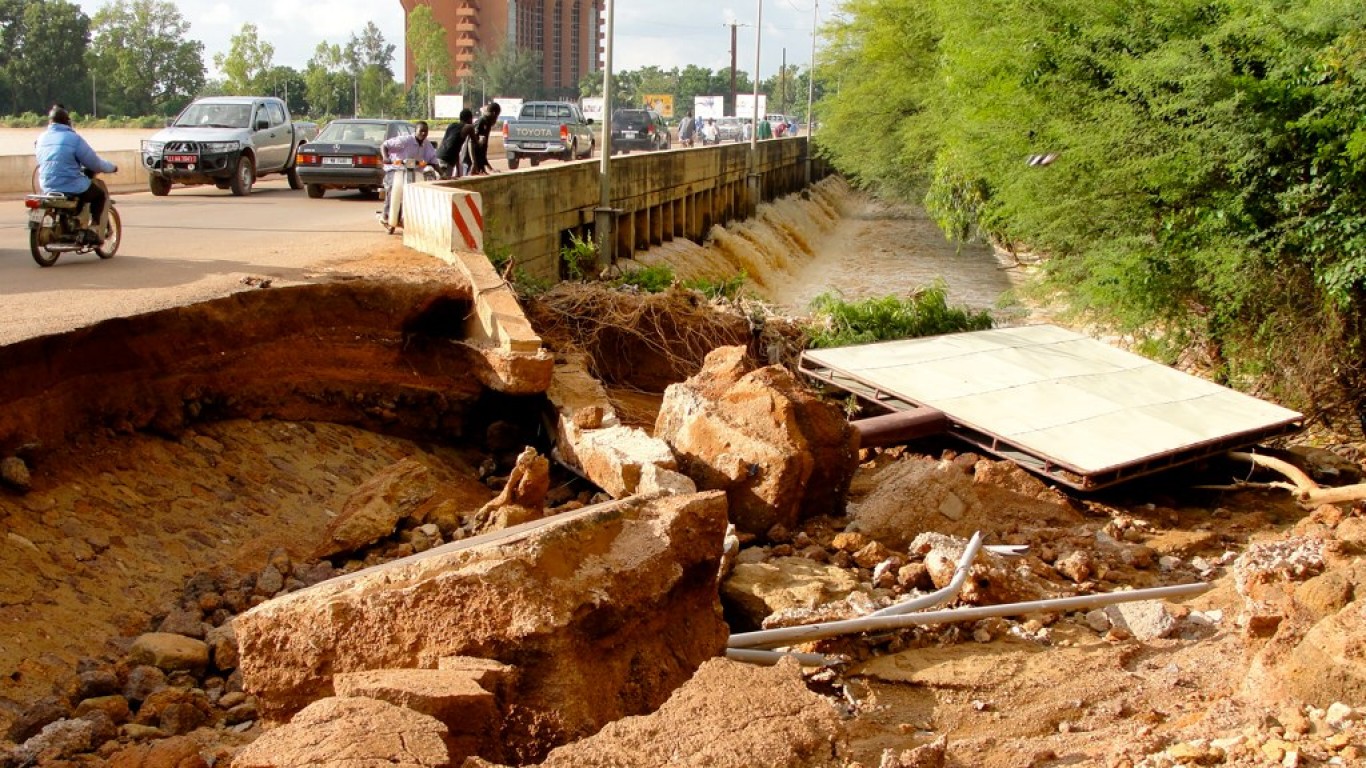
 24/7 Wall St.
24/7 Wall St.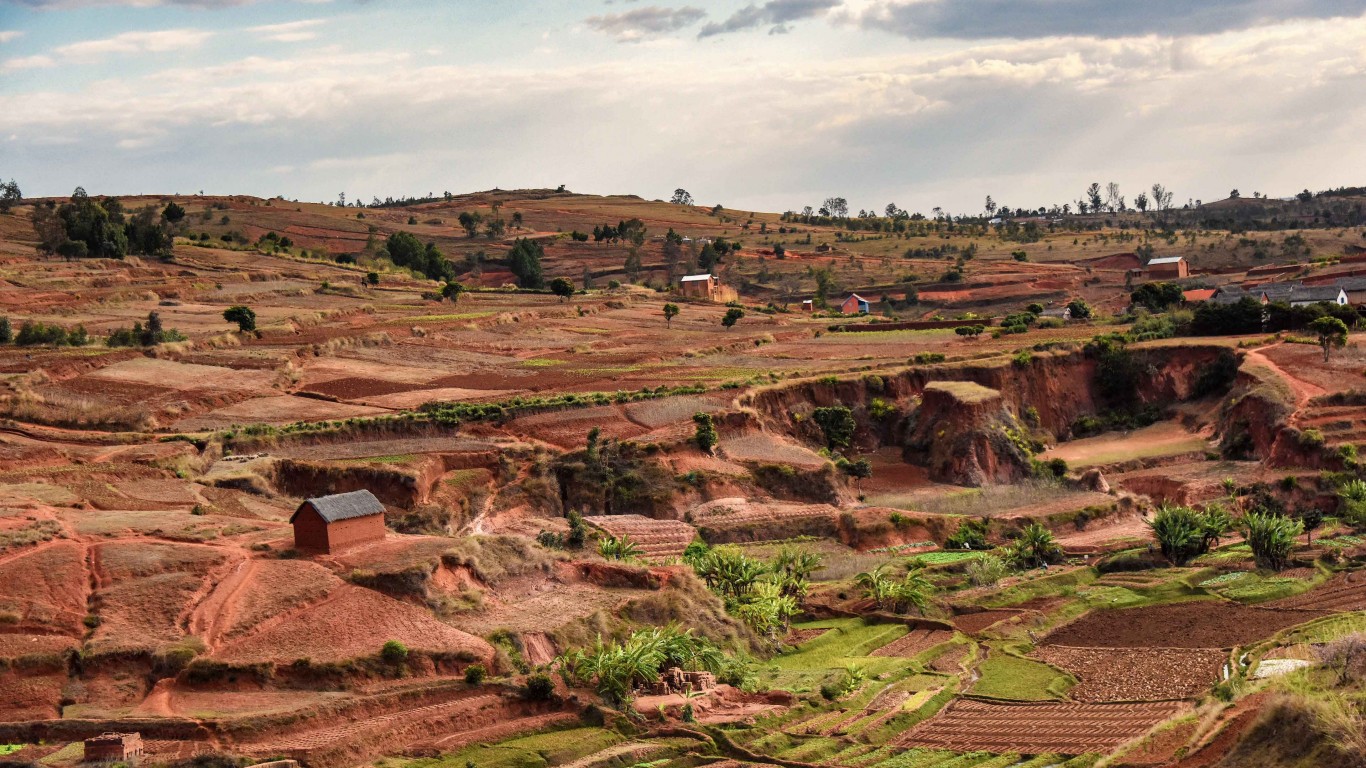
 24/7 Wall St.
24/7 Wall St.